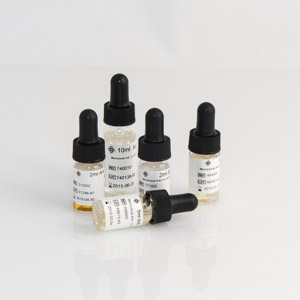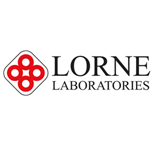Lectins in Laboratories: An Overview
16 May 2019

Blood grouping reagents are solutions that are used to determine blood type. The 4 ABO blood types are determined by whether certain antigens are present on the surface of the red blood cells, and whether certain antibodies are present in the blood plasma. Blood grouping reagents cause agglutination (clumping) on the test red blood cells that carry certain antigens, and thus determine whether those antigens are present and so type the blood cells. Lectins are a class of protein, usually of plant origin, that binds specifically to specific sugars, which causes agglutination of particular cell types. Because of their properties, lectins are often used in blood grouping reactants.
At Lorne Laboratories, we sell three types of lectins used for blood group classification. Read on to find out more.
Anti-A1 Lectin
The anti-A1 lectin reagent is used to differentiate A1 red blood cells from other subgroups of the A blood type. This reagent will cause agglutination of red blood cells that carry the A1 antigen. Group A1 blood cells will react with both anti-A and anti-A1 reagents, whereas group A2 cells will only react with anti-A reagents. The anti-A1 lectin is prepared from an extract of Dolichos biflorus seeds, diluted with a sodium chloride solution containing bovine albumin.
Anti-H Lectin
Anti-H lectin reagents contain a phytohaemagglutinin specifically for the H antigen in red blood cells. It is used to determine the presence of the H antigen; the reagent will cause agglutination of test cells if it is present. The H antigen is part of the Hh system and is present in all red blood cells apart from the Oh (hh) phenotype, which is extremely rate. The anti-H lectin is made from an extract of Ulex europaeus seeds, diluted with a sodium chloride solution containing bovine albumin.
Anti-N Lectin
The anti-N lectin reagent is used to determine whether the N antigen is present. This reagent will cause agglugination of test red blood cells that carry the N antigen. The N antigen is part of the MNSs system, a human blood classifying system first discovered in 1927 based on the presence of M, N, S, and s antigens. The anti-N lectin is made from an extract of Vicia, diluted with a sodium chloride solution containing bovine albumin.
The properties of lectins taken from plants mean they are highly useful when classifying red blood cells. To find out more about our lectin products, blood grouping reagents or place an order, make sure to contact us today.
< Back to blog list
Share




